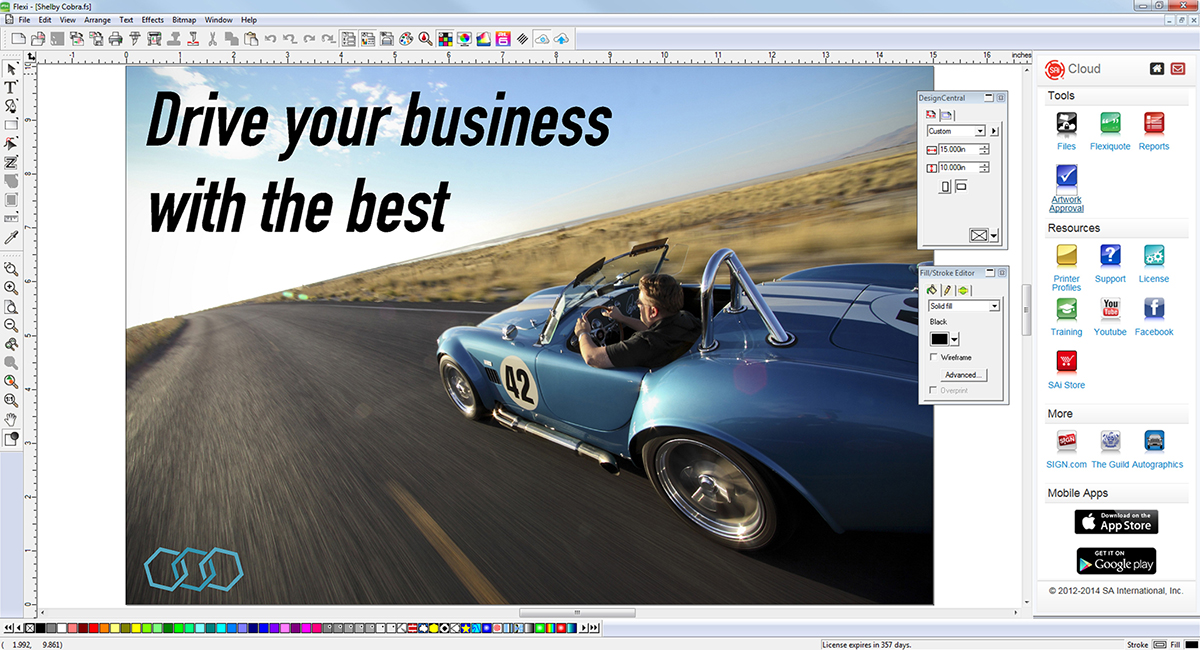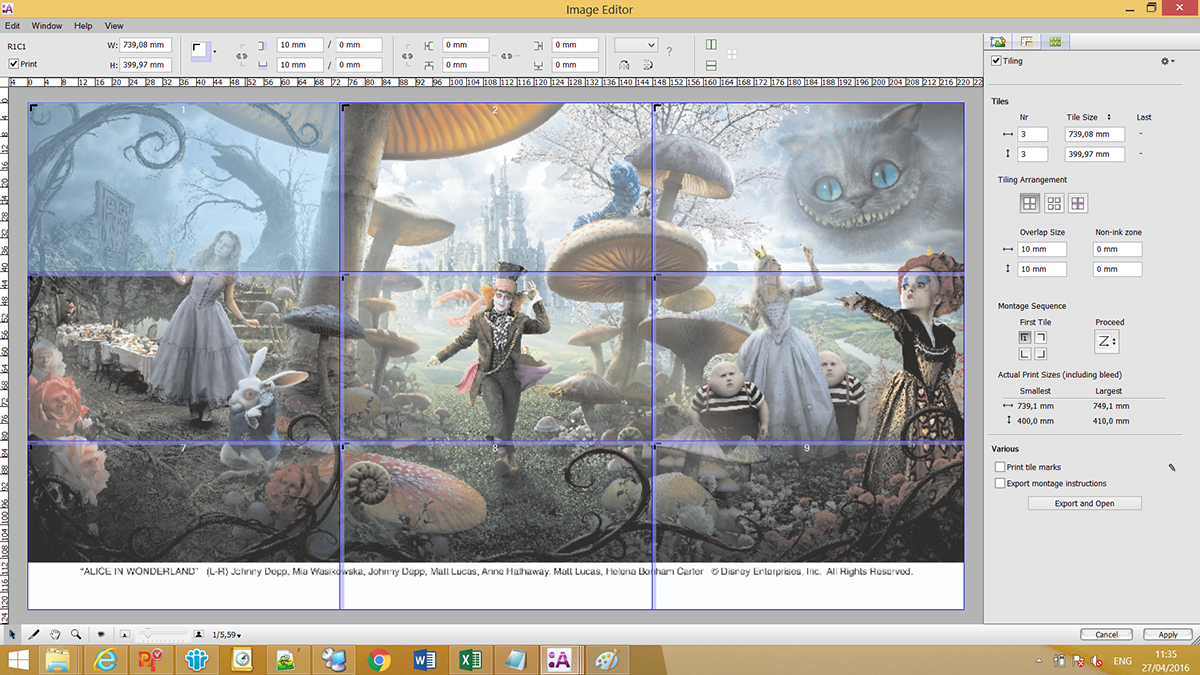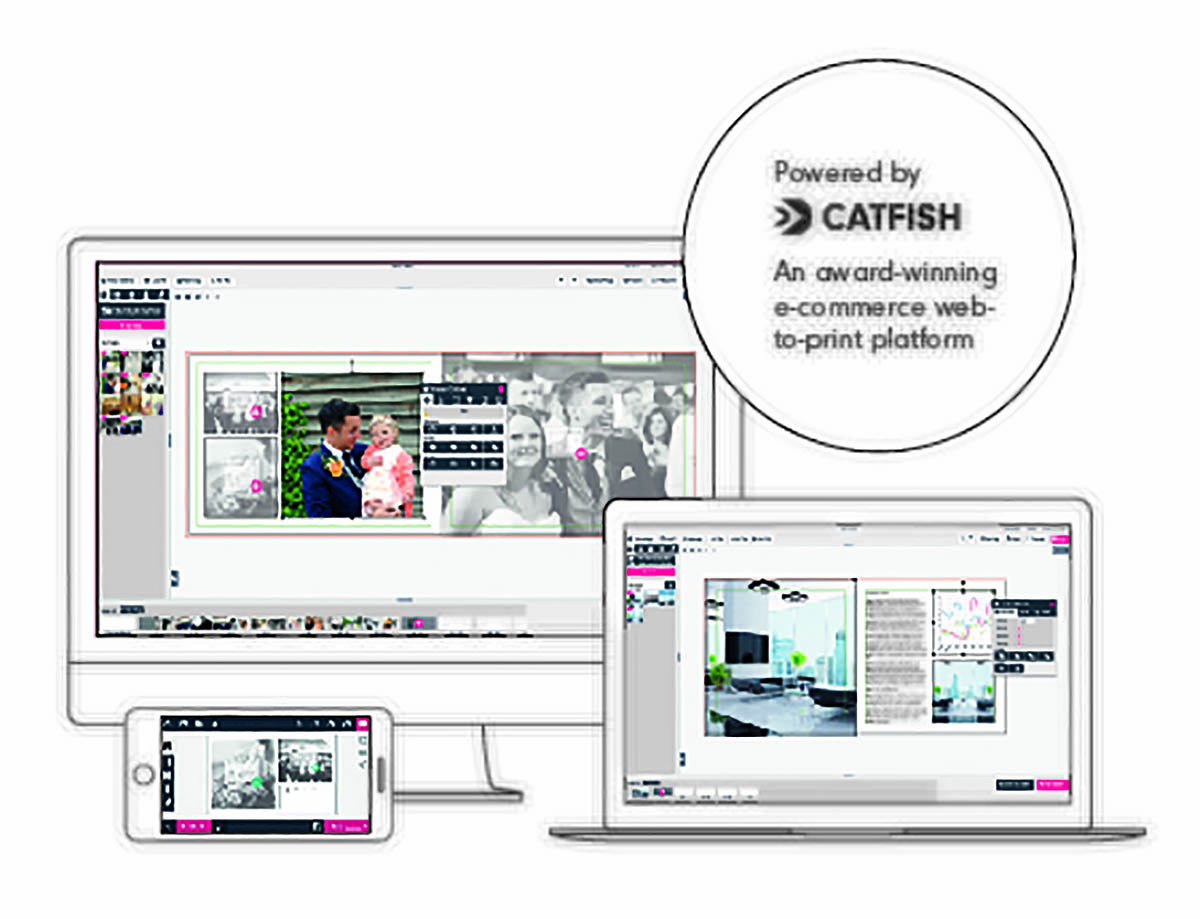What's new in the realm of design, workflow and W2P software, and how could these packages help your business? Richard Stuart-Turner finds out.
Following our look last month at some of the proofing and customer asset management type software packages available, we now turn our attention to the other major areas of large-format software that could help you to grow your business; namely design packages, workflow and W2P.
48.97% of the 243 respondents to our Widthwise 2017 survey said they are planning to add creative design services in the next year, in order to develop and diversify their offering and meet customer demand. Specifically, 14.81% of respondents said they expect to invest in wide-format design software over the next two years.
Gerard Metrailler, vice president of products at software company Corel, is one of those who believes it makes sense for PSPs to have design services in-house as it speeds up turnaround times and helps to build and strengthen customer relationships.
“The economy has changed a lot in the last five to ten years and we've seen a lot of sign shops and wide-format PSPs broaden their range of offerings. If a customer comes in the door and they want their car wrapped up, that's one thing, but quite often that same customer wants their flyers and business cards done too. Many of those sign shops, car wrappers and vinyl guys now offer a full one-stop shop for everything graphics related for their customers. Having a designer or two in-house to do the graphics provides tremendous consistency.”
There are a plethora of new as well as long-established design software options on the market to aid a PSP in this space, ranging from comprehensive graphics packages that let you create anything from basic to complex artwork for customers, right through to specialist packages for signmakers. Many PSPs find that Adobe's popular Illustrator, InDesign and Photoshop packages satisfy their design needs, but there are plenty of alternatives available.
Corel has just launched CorelDraw Graphics Suite 2017, the latest version of its design software. This package builds on previous versions with a range of new features, including the LiveSketch tool, which the company said eliminates the process of sketching, scanning and retouching by allowing designers to use a pen-enabled device to recreate an image live on screen. This feature is based on a neural network that understands and interprets hand-drawn strokes.
“If you look at vector graphics, they're all using concepts that are 20 to 30 years old, it's all about curves and mathematical formulas,” says Metrailler. “Until now graphic designers really didn't have a pen and paper experience on a computer because they had to think about mathematics and how to create the curves using that.
“With LiveSketch we're really enabling the user to have a creative experience that is as tactile and fun as sketching a doodle on a piece of paper. It combines the power of the computers we have today as well as the latest developments in artificial intelligence. You can really do things that are unique in ways that weren't possible before.”
Metrailler adds that around five hours of training tools, including videos, come with the software - meaning that anybody in the industry can quickly pick up the knowledge needed to design graphics for their customers.
“This is very important because our users are trained on the go - they haven't gone to formal art school to learn graphics. They utilise the training materials directly in the product as well as our YouTube channels to learn.”
Some printer and finishing kit manufacturers also offer their own design software, often bundled with hardware. Roland DG, for example, offers its CutStudio software free with purchases of certain technology. This product provides tools to enable PSPs to design and create professional custom-cut graphics for applications including signs, decorated apparel, vehicles, POP materials and backlit displays.
Meanwhile, software developer and digital cutter supplier AG/CAD is now up to version 11 of its Kasemake packaging design CAD software. Kasemake is used in tandem with the DYSS machinery sold by the company to create packaging, POS and POP design, for both carton and corrugated board.
This software features 2D drafting tools, 3D preview and animation capabilities, comprehensive exchange formats, and easy design editing. Designs can be created using a number of freehand and geometric drawing tools and an array of editing tools.

Popular among PSPs producing signage is SAi's range of software, which includes its flagship Flexi product. Flexi 12, which SAi director of sales for EMEA, Marc Hermans, calls “the complete solution that offers design, cutting, print and cut, and large-format printing”, was launched back in 2015. The package receives regular updates, the newest of which - Flexi 12 Service Pack 3 - will be shown by the business at Fespa 2017.
“This is a free of charge update for existing Flexi 12 customers that incorporates some fixes, some enhancements, and adds support for new devices that recently came to market,” says Hermans. “In 12 we added a lot of productivity tools, for example to automatically put grommets for those who are printing banners, as well as tools to easily make canvas prints so that the folds are done automatically for you.
“12 was a major step in offering customers all the productivity tools they were after. Now we're on the same path but tweaking and adding specific little things to it, there's nothing major that can be added this time.”
Hermans says it makes sense for the design part of a print job to be part of the same environment as the production.
“The customer can only benefit because they don't have to go through multiple programs, importing and exporting. When you do this there are risks, like a profile maybe not being included or a font missing. This causes prints that are not correct and jobs have to be resubmitted and reprinted, which is a waste of time and money.”
11.11% of Widthwise respondents said they plan to invest in workflow software in the next two years. Workflow is another area that many large-format PSPs are keen to get to grips with, if they haven't already. Many printer manufacturers offer their own workflow solutions, which are often tied into their own hardware. Agfa Graphics, however, has started to move away from this approach with its latest release, Asanti 3.0. This workflow software, which features a new graphic user interface for tiling huge jobs, has also been enhanced to offer integration with third-party print equipment and MIS platforms.
“We see that customers are moving towards a more industrialised way of producing jobs in the sign and display market and they are starting to buy real MIS solutions,” says Agfa Graphics workflow solutions marketing manager, Erik Peeters.
“Instead of using Excel or a home-cooked management system, they are now starting to use real tools and hooking up such an MIS to a production system is becoming more and more important to them.”

He adds: “Previously, Asanti purely focused on the Agfa engine and the Agfa ecosystem - our printer ranges and the Agfa Acorta device for finishing and cutting. With Asanti 3.0 we've taken a real step forward by driving third-party devices as well. So we have drivers for the HP Latex, Mimaki, Epson and others, it continues to grow.
“What we have seen is that people don't just have Agfa equipment but also have a Mimaki device, for example, to print onto thicker material. In order to make sure the preparation can be done by one person, it's best to have one workflow and one production hub. It's in that area that we saw a gap that we could fill with Asanti.”
Asanti 3.0 also allows for integration with Agfa's in-house software including StoreFront, the company's cloud-based W2P system, which allows PSPs to set up online stores to extend their service to existing customers and expand into new markets.
7.82% of Widthwise 2017 respondents said they expect to invest in W2P software in the next two years - making it the third biggest software investment area listed in the survey, after design and workflow.
Plenty of off-the-shelf options are available in this area - including Agfa's aforementioned StoreFront, EFI's Digital StoreFront, Fujifilm’s XMF PrintCentre, and Infigo Software's Catfish platform.
Catfish can be configured to the exact requirements of the PSP, with a customisable front-end enabling users to design their own bespoke page layouts. One of the latest additions to the system is a new 3D preview tool, which enables end users to see touches such as foiling, embossing and coating before they order.

Infigo Software head of marketing, Suzanne Rouart, says numerous large-format PSPs are already using Catfish: “The demand for accessible, on-demand printing services is growing in almost every industry, and wide-format PSPs definitely need to heed the trend and evolve their solutions quickly to stay relevant in this fast-paced, digital-first world.
“None of us are immune to the growth in demand for personalisation in all kinds of products. Brands recognise that consumers will pay a huge premium for a personalised product and so we’re seeing more and more unusual personalised product offerings filtering through, both large and small-format. We have a large-format client who offers personalised wallpaper, another with personalised wrapping paper, and a number of retail brands offering large personalised wall art and fabrics.”

Taking a different approach to W2P is Matic Media, a PSP based in Coatbridge, just outside Glasgow. The firm has built its own W2P software platform, Graphic Warehouse, which it developed entirely in-house. This allows users to create a quote for around 180 large-format products, upload artwork, preflight it, and deliver it to Matic Media, all in under one minute.
Matic Media managing director, Richard McCombe, says: “It's far more intelligent than just being a website. We went to all our suppliers, whittled down all the stock lists to things we knew would work on our machines, timed our machines, mapped our stocks to the machines, and then mapped everything back to the products.
“So now, when you go into Graphic Warehouse and drop the drop-down menus, it's automatically mapping which touchpoints the job is going to hit. It knows what machine, ink and material to use and that it's then going to go onto the digital cutter and then next door to sit in the bay. It's doing all of this stuff intelligently behind the scenes.”
McCombe says 12% of the company's turnover in February this year could be attributed to Graphic Warehouse and he hopes that 50% of turnover will ultimately come from this platform.
He also believes that the large-format industry is quickly starting to commoditise, and that building or investing in a W2P system can help PSPs to remain competitive on this sort of work.
“As the industry is commoditising across print, it's driving down the marketplace, so you either get in or you're going to die. But you can't do it manually because you've got to take the phone call or the email and do the quote, then you've got to chase it up, create the paperwork and send it to artwork, who's got to proof it. Then you've got to output it and send it to the print room, and then you've got to print it and finish it.
“So you can't do a roll-up banner for £24.99 if you've got to do it all manually. That whole marketplace for roll-ups, pop-ups, posters and banners is going to go in the next five years and the guys doing that work are going to get forced into the consultancy arena where they're going to have to walk into a suite of offices and do all their wallpaper, signage and graphics; that project management space is where they're going to get value. But if everyone starts to squeeze into that arena then there's not going to be enough.”
A stark warning, perhaps, and whether McCombe's predictions will come true remains to be seen. But what does seem clear at least is that software is a large-format investment area that continues to flourish.
Investing in a design, workflow or W2P software package is a relatively cost-effective way of adding more strings to your bow, futureproofing elements of your business, offering your customers something extra, and making their lives - and yours - a little bit easier.
With all of that in mind, it hardly seems surprising that so many PSPs have currently got software packages of some sort high on their wishlists.


